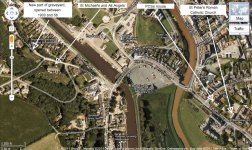About her grave ! It wasn't Lillie, it was Fulgour.
http://www.tarotforum.net/showthread.php?t=28086
No. Not me.
I'd like to speak about 'Pauper's graves'.
It's a loaded term that has no meaning defined in law.
It brings to mind ideas of Mozart being tumbled into a corpse pit in 'Amadeus', and other such horrors.
It's a commonly used phrase, particularly by tabloid newspapers because of it's shocking connotations.
A more proper term would be 'buried at the expense of the parish'. Which just means they pay because you can't.
It can mean a common grave. There have been recent horror stories about mass baby pits in London. It can also mean an individual plot.
In Bude in 1951 it is unlikely to mean a mass grave, although it may have meant a shared grave.
Bude would have been far too small to have mass graves unless they had a plague to go with them.
So, PCS could have had any kind of burial, although it would have been unmarked unless someone paid for a stone.
You would think that the plot would be known, that it would be in the church records somewhere. Well, yes, it should. But stuff gets lost and mislaid, (graves more often than people might imagine) and who knows who asked who about it. I wouldn't be sure unless I had contacted the people myself and been to see.
She could well be somewhere in the Parish Churchyard. St Michael's and All Angels. It's a nice looking church and close to where she lived.
There was a new part of the churchyard opened between 1933 and 56 (Two maps that I have access too). So she is probably in that area, if she is buried in St Michaels.
Another option might be a Roman Catholic cemetery. But her local church (almost next door to her house!) was a fairly modern building, very small, and had no graveyard.
So, if I was investigating this (and I'm not) I would be asking where Bude Catholics were buried at that time, and where parish burials took place. Were they always the parish church or were they sometimes elsewhere?
I would also be looking to see if there were any local papers from the time.
I'd be looking for local history societies that might know all this stuff.
Finally, on the subject of so called 'paupers graves' I myself expect to be dealt with 'by the parish'.
Not buried I hope. I don't want to be dug up in future by weirdo archaeologists.
I'll be cremated, thanks.
But I've lived my life as a pauper, and I'll die as one too, if my plans come to fruition.
I append a screenshot from google maps, for anyone who is interested.
The relevant places are marked.


